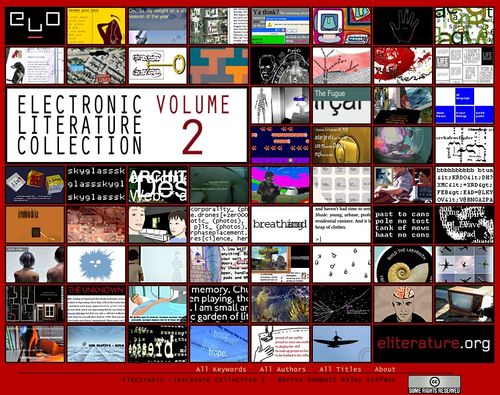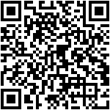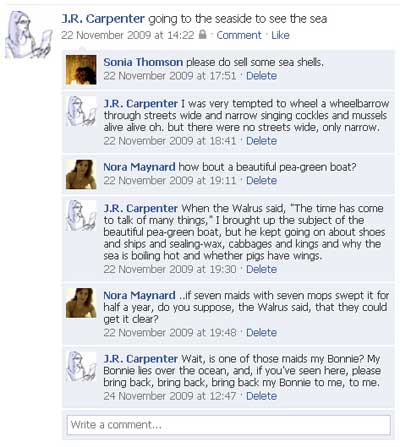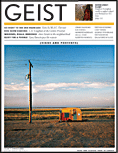CityFish has been published in Volume 3 of soundsRite, a journal of online sound and writing founded in 2009 by Hazel Smith and Roger Dean as an initiative of MARCS Auditory Laboratories and the Writing and Society Research Group, University of Western Sydney, Australia. soundsRite publishes selected new media work which includes words or sound or both, featuring sound works created for digital embodiment, including generative, interactive and multi-channel pieces, and showcasing writing which is kinetic, generative or interactive.

CityFish is a hybrid word, title of a hybrid work, tale of a hybrid creature. Part classical parable, part children’s picture book, CityFish is a web-based intertextual hypermedia transmutation of Aesop’s Town Mouse Country Mouse fable. Winters, a Canadian girl named Lynne freezes in Celsius in the fishing village of Brooklyn, Nova Scotia (Canada), a few minutes walk from a white sandy beach. Summers, she suffers her city cousins sweltering in Fahrenheit in Queens, New York (USA). By now Lynne knows everyone knows it’s supposed to be the other way around. Lynne is a fish out of water. In the country, her knowledge of the city separates her from her school of friends. In the city, her foreignness marks her as exotic. Meanwhile, the real city fish lie in scaly heaps on long ice-packed tables in hot and narrow Chinatown streets. CityFish represents asynchronous relationships between people, places, perspectives and times through a horizontally scrolling browser window, suggestive of a panorama, a diorama, a horizon line, a skyline, a timeline, a Torah scroll. The panorama and the diorama have traditionally been used in museums and landscape photography to establish hierarchies of value and meaning. CityFish interrupts a seemingly linear narrative with poetic texts, quotations, Quicktime videos, DHTML animations, Google Maps and a myriad of visual images. Combining contemporary short fiction and hypermedia storytelling forms creates a new hybrid, a lo-fi web collage cabinet of curiosities. The story of Lynne and the city fish unfolds in this strange horizontally scrolling world of absences and empty spaces – furious, intimate, and surreal.
More information on CityFish: http://luckysoap.com/lapsuslinguae/category/cityfish/
CityFish on soundsRite: http://soundsrite.uws.edu.au/soundsRiteContent/volume3/JRInfo.html

 Dragnet Magazine, a new online/eBook literary journal that “trawls the sea of stories for the best fiction,” has included a short story of mine in their very first issue. The story is called Best Behaviour. It’s fiction, obviously. Given my limited knowledge on the subject, the story is a short one, weighing in at just 879 words. It’s based on an even shorter story. My behaviour is improving in tiny increments year by year.
Dragnet Magazine, a new online/eBook literary journal that “trawls the sea of stories for the best fiction,” has included a short story of mine in their very first issue. The story is called Best Behaviour. It’s fiction, obviously. Given my limited knowledge on the subject, the story is a short one, weighing in at just 879 words. It’s based on an even shorter story. My behaviour is improving in tiny increments year by year.


![J. R. Carpenter GENERATION[S]](http://traumawien.at/gfx/CarpenterCover_sans.png)

 I love
I love